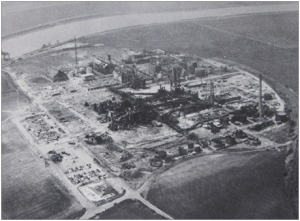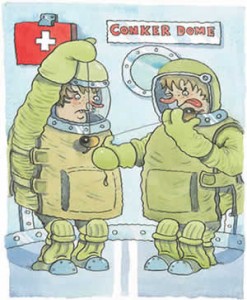One of the recurrent themes that our research project encountered across the 55-year period studied was the importance of sharing and disseminating information, both as a means of extending the reach and coverage of the regulatory system, and as a method of avoiding accidents and work-related ill-health and injury. Information-provision is one method of bringing different constituencies into the process of controlling risk, empowering and facilitating workers, employers, and others in managing their own health and safety; as such, it is worth reflecting briefly on how the way that information is shared from regulators and professionals to workers and the public, has changed over time.
At the start of our period, this was very didactic, reflecting a very traditional conception of the relationship between those with information and those without: one witness recalls “We organised tuition mornings in one of the Cutler’s halls, and all the firms sent apprentices in for health and safety instruction, rows and rows of apprentices in front of you” (Stan Barnes interview, para.67). This almost Victorian-sounding image of fresh-faced youngsters receiving instruction underlines the status of information about risk as a technical requirement of training – to be endured and attained rather than actively developed and cultivated. It also emphasises the hierarchical nature of information-sharing – being passed down from those in the know. It is perhaps not hard to see the seeds of a cultural resentment of ‘elf and safety’ being sown here, as well as the parallels with the worst examples of the dreaded ‘away-days’ and ‘mandatory HR training events’ that litter many people’s current experience of health and safety.
The 1974 Act provided a catalyst for significant change. It led to the development of more academic, university-based, professional training in health and safety, with different Universities (with Aston University, which also provided education for trainee HSE inspectors, perhaps foremost among them) stepping in as educational providers. this would underpin much of the efforts made to create and develop a respected and accredited safety ‘profession’ in the years post-1974. But the 1974 Act also made information-provision a more fundamental part of the regulatory system. It imposed a requirement (under s.11 HSWA) for coherent ‘information services’ to be provided by HSE. The practical method developed for this provision was very technologically-driven, using cutting-edge means of distributing technical materials: Sheila Pantry, who pioneered much of HSE’s work in the area, recalled that the HSELINE database, created in the late 1970s, actually made use of the European Space Agency’s international computing platforms (a precursor to the internet), the first public body to do so (interview, para.50). Alongside this, the 1974 Act broadened the law’s coverage, creating a need for accessible, non-specialist materials, such as HSE’s ‘DO AND DON’T’ leaflets, written in layman’s language, and the creation of telephone enquiry lines, among other things. Over time, this provision has expanded and taken on many different forms, and the further expansion of the internet and online resources has facilitated this even further.
In more recent times, however, a concern has been raised by some that the professionalization of health and safety has led to information and training benefiting those within health and safety (‘the converted’), but left the wider public behind (something the Löfstedt report was concerned over). The sophistication of information-provision and training for those for whom health and safety is a central part of their role, has not been matched by successful efforts to educate the wider public and workforce, for whom health and safety is less consciously important (perhaps explaining the residual reliance upon very clunky ‘inset’ methods that alienate more people than they empower). The greatest threats to health and safety tend to emerge from workplaces with a climate of disengagement – either due to employer ignorance and neglect, or employee disenchantment and hostility. Better communication provides the best means of addressing both of these issues. While there are examples (such as the British Safety Council’s work on school-level safety education) of wider engagement initiatives, there is perhaps a need to broaden the scope of ‘safety training’ further in the future – building a more risk-literate and informed citizenry who can think about health and safety issues, and made effective decisions, for themselves.





